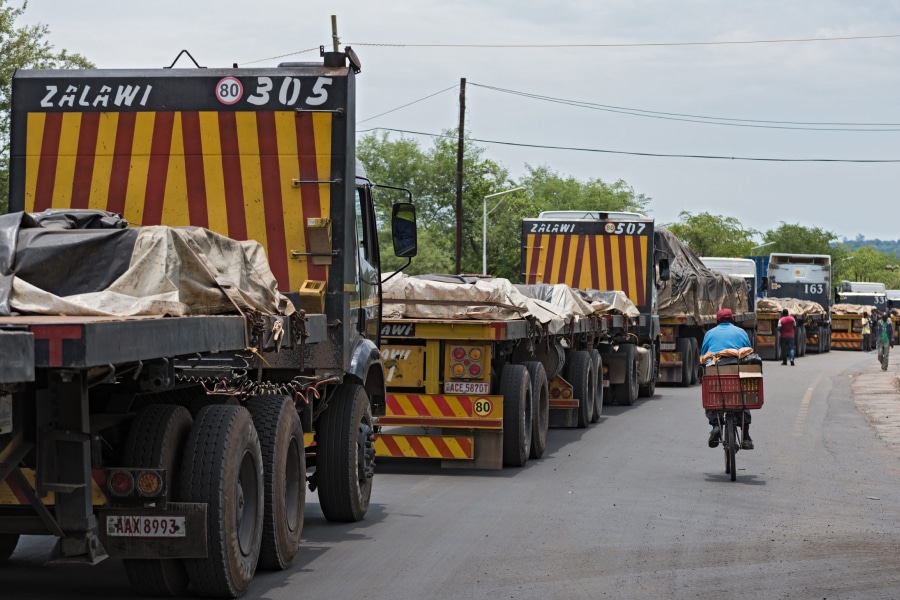Substantial opportunity and potential exist in light manufacturing in Africa. For decades, African countries have struggled to industrialize at a level that can sustain jobs and produce a significant share of their goods. Political instability and major restrictions on trade and manufacturing have kept Africa from reaching its potential. Today, thanks in part to a new free trade agreement, Africa joins a renewed industrial revolution.
The light manufacturing industry
The modern industrial world generates a large number of well-paid jobs and connects many sectors of business, increasing the supply of consumer products distributed around the world. With light manufacturing requiring a low investment of overall capital and providing significant growth opportunities, the industry is a heavyweight in many developing economies.
Overview of light manufacturing
When many think of the manufacturing industry, they may envision enormous industrial plants packed with massive machinery and bustling with giant rigs and freighters. For the heavy manufacturing industry, this vision is accurate. But a dissimilar industry, one with lower environmental impact and lower reliance on heavy machinery, invokes a brighter image.
Heavy manufacturing transforms raw materials into large products used by other sellers later in the supply chain. By comparative advantage, light manufacturing produces small, high-value items destined for direct sale to consumers. This industry includes sectors in the production of food, clothing, electronics, paper, medications, and automobiles. Consumers use these products regularly, so the light industry requires quick and constant output.
Because it is less reliant on large plants and requires less capital investment for production and exportation, the light manufacturing industry is democratically dispersed throughout the world. Countries such as Brazil, Japan, China, and the United States are leaders in this industry. But according to an article from Industry Week, several African countries are now poised to move up the light industry ladder.
The status of light manufacturing in Africa
Though the manufacturing industry in Africa saw growth before the 1980s, shocking changes in the economy, especially after the COVID-19 pandemic, led to a decline. Regulations and instability forced many African populations to work in the informal sector and stifled manufacturing efforts. Until recently, Africa’s manufacturing industry suffered from heavy competition and low gross domestic product.
Despite these trends, some countries enjoy benefits from the light industry, including rising wages. And although manufacturers must still make efforts at expansion, connectivity, and infrastructure, the continent’s manufacturing production increased from $73 billion to $157 billion between 2005 and 2014. In addition, significant advancements in sub-Saharan Africa continue to develop, shifting economies from mineral-based sectors to consumer and service sectors.
For instance, light manufacturing efforts in developing countries such as Ethiopia, Uganda, and Nigeria are on the rise, particularly in production of food and beverages, packaged goods, fabrics, and furniture. Sub-Saharan Africa benefits from low labor costs, substantial resources, and favored international trade access with US and European markets. To further increase trade logistics, a key component of light manufacturing, African countries work to implement new procedures to increase automation and improve risk management systems.
Benefits of light manufacturing
Unlike heavy manufacturing, light manufacturing activities do not require heavy machinery or sizable amounts of raw material. Thus, they consume less energy and minimize the environmental impact. These characteristics make light manufacturing possible in and around cities and residential areas.
Light manufacturing does not require large areas of land for huge facilities. This results in a decreased need for power, equipment, and materials, making this industry less capital intensive. As an added benefit, the industry’s direct-to-consumer aspect makes it specifically designed for buyers.
In Africa, these benefits are of considerable value. Working to transform the economy, industry leaders in Africa work to support its expansive population. The light industry is labor-intensive because of high-demand production, so it contributes to job creation. Increased job creation makes long-term investments in skills training and education necessary for developing Africa’s manufacturing capabilities.
World Bank economist Hinh Dinh states, “No country in the world has developed without producing light manufacturing. And no country can skip it.” According to an article from New China, Ethiopia gained 23,000 job opportunities from the creation of a single light manufacturing industrial park. Continued supportive and collaborative efforts among African governments, stakeholders, and private sectors are essential if trends like these are to continue.
Regulations for light manufacturing in Africa
Demanding policies and regulations stifle these collaborative efforts and place serious limitations on Africa’s economic competitiveness in manufacturing. Having open trade and support from foreign investors and suppliers is crucial for the success of African economies.
Light manufacturing challenges in Africa
Some challenges African countries face in gaining this support include establishing reputations for reliability in trade and improving infrastructures for better network connectivity. Instances of corruption and crisis have led some trading partners to consider African trade to be high risk, and unreliable internet service impacts growth capabilities.
Barriers to trade in goods and services provide further challenges. Direct and indirect costs of international trade are some of the highest in the world, and the system of tariffs can be complex. For example, South Africa has nearly forty different tariff rates. In addition, some African countries maintain strict access to banking, insurance, engineering, and legal services.
Heavy competition from Chinese companies and other Asian markets causes an imbalance in supply and demand, forcing African governments to increase prices and tighten regulations and restrictions. To keep better control over trade and local economies, they must establish stringent qualification requirements for market entry, licensing, taxation, and foreign ownership.
Regulations to know when doing business with Africa
Though reforms are underway in many areas, African governments often impede efforts of doing business both within the continent and with other continents. Poorly considered tax policies, local content requirements, and restrictions on trade are key constraints. Governments in Africa emphasize making investments in domestically manufactured goods and services to raise revenue.
Recent frustrations from would-be foreign investors include frequent policy changes from African governments, making subsidies and trade unpredictable. The less stable business models that some companies hold can lessen confidence and credibility, as do continued arguments among trade regulators regarding taxation. Outmoded infrastructure and varying quality standards also contribute to business difficulties, particularly due to unreliable access to power and underdeveloped human capital.
High-level professionals from both the public and private sectors suggest that local content regulations require transformation. The best way to accomplish this is to find methods that are strict enough to develop local economies but loose enough to avoid deterring corporations. Until then, those doing business with Africa may find themselves restricted by red tape and conflict. Still, some ease in regulations and a new wave of technology are helping lower costs of doing business.
Opportunities for light manufacturing in Africa
As African countries continue making advancements in logistics infrastructure such as ports, airports, and roads, and if they streamline customs procedures, opportunities for light manufacturing will blossom.
One of the newest and most promising opportunities for light manufacturing in Africa is in Ghana. Working with a committee formed by Ghana’s president, members of the European Union recently announced the possibility of the country becoming a hub for COVID-19 vaccine manufacturing. If this move succeeds, the European Investment Bank is ready to offer support to the project.
Other encouraging opportunities in Africa stem from a recent introduction of 5G wireless communication in several countries. With faster and more efficient connectivity services, African countries can expect to see this advancement in technology boost their manufacturing capabilities. The article from Industry Week points to an example of this with General Electric planning to spend $1 billion in Nigeria by 2023 to help strengthen the country’s manufacturing and product services.
Additionally, governments in Mozambique plan to implement policies that will help spread wealth, bolster the economy, and create competitive market pricing. This boost will encourage more efficient processing of high-quality material production and enable businesses to capitalize on Africa’s availability of natural resources.
Africa’s budding industrialism
these regions, manufacturing is the fourth-largest industry. And South African Market Insights reports that the food and beverage sector of the light industry contributes to 25 percent of manufactured goods in the country.
Of note are the advances in Ethiopia and Rwanda. According to the article from New China, Ethiopia strives to become the manufacturing hub of Africa. The country has already invested $1.3 billion toward constructing industrial parks and aims to have thirty parks in place by 2025. In Rwanda, a boost in the manufacturing sector stems from high-quality infrastructure and the introduction of technical schools and on-the-job collaborative training programs.
Founders of the African Continental Free Trade Area (AfCFTA) intend to see this success continue. The agreement untangles customs procedures and lifts manufacturing and trade restrictions. The implementation of the AfCFTA will provide African countries with major opportunities for ending extreme poverty through long-term growth.
Light manufacturing in Africa: A budding industry with considerable opportunity
Regardless of restrictions and challenges, there is great potential and opportunity for light manufacturing in Africa. Economists expect spending and investment in the industry to reach over $666 billion by 2030.
Agility supports Africa’s economic growth and contributes to the continent’s budding light manufacturing industry. Recently, with a focus on structural transformation and sustainability, Agility opened new logistics parks in Mozambique, Ghana, Cote D’Ivoire, and Nigeria.
Find out more about Agility’s investments in logistics in Africa.
Quick Links
- The light manufacturing industry
- Benefits of light manufacturing
- Opportunities for light manufacturing in Africa
- Africa’s budding industrialism
- Light manufacturing in Africa: A budding industry with considerable opportunity





